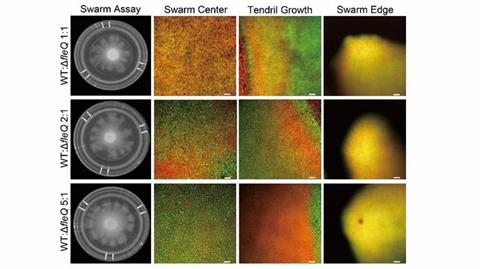Recently, a research group led by Prof. Wang Junfeng from the Hefei Institute of Physical Science of the Chinese Academy of Sciences, along with Prof. He Yongxing’s research group from Lanzhou University, discovered an interesting way bacteria adapt to their environment.

Their study, published in Microbiological Research, reveals that bacteria can evolve by losing their flagella, the structures responsible for movement.
READ MORE: Scientists probe mechanism of robust motility in flagellated bacteria
READ MORE: Bacteria store memories and pass them on for generations
Flagella are important for bacteria because they help them move toward better environments and away from harmful conditions. However, producing flagella is energy-intensive, requiring many genes to work together. Under certain conditions, bacteria can survive without flagella, saving energy and reducing their metabolic burden.
700 generations
In this research, researchers studied a type of bacteria called Pseudomonas syringae pv. tomato (Pst) DC3000. After 700 generations in the lab, the bacteria gradually lost their flagella, and as a result, their ability to move decreased. Surprisingly, this loss helped the bacteria survive better in the lab environment. The researchers used a combination of proteomics, genomics, and other scientific tools to understand how and why this change happened.

In addition to flagella loss, the researchers also discovered that the evolved bacteria began to produce more surfactants, which are molecules that help bacteria stick to surfaces. This change allowed the non-motile bacteria to “hitchhike” on other bacteria, increasing their chances of survival in environments where movement was not essential.
This study not only explains how flagella loss happens but also provides new insights into bacterial evolution and adaptation, shedding light on the genetic and environmental factors that drive these changes.








No comments yet